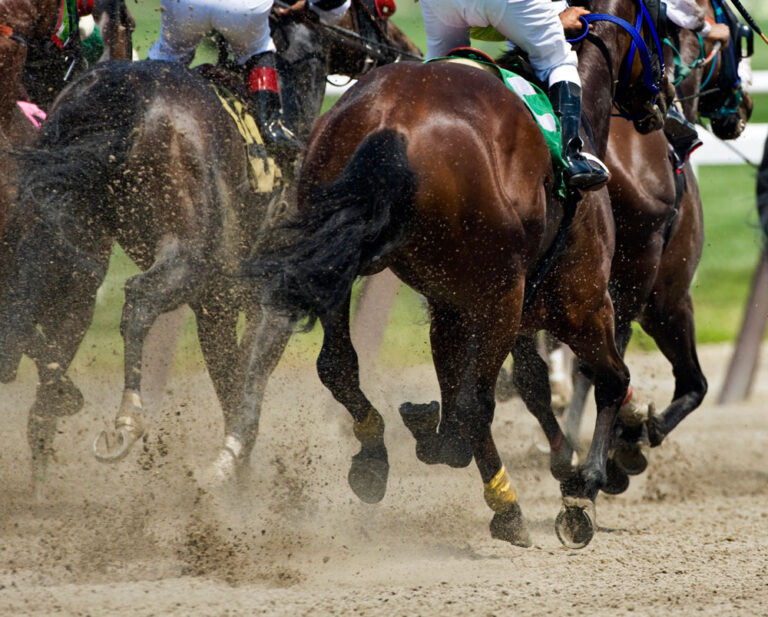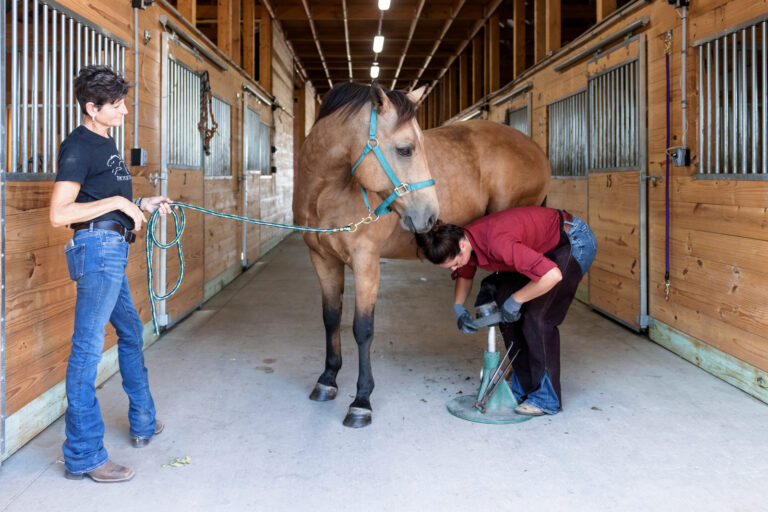
Equine practitioners understand there can be an association between spine problems and lameness. At the 2022 AAEP Convention, Hayley Sullivan, DVM, MS, of Kentucky Equine Hospital, illuminated the importance of the thoraco-lumbar multifidus muscles in the postural stability of the horse.
She began by explaining that the thoraco-lumbar (TL) spine attenuates forces from the appendicular skeleton. Studies support compensatory changes in TL kinematics due to alterations in force distribution from lame limbs, even with subtle lameness. This correlation between limbs and spine is revealed when the TL spine’s range-of-motion improves immediately following diagnostic analgesia of the lame limb. Interestingly, saddle slip to one side occurs in 50% of horses with hindlimb lameness.
Sullivan noted that spinal stability is necessary for response to destabilizing forces during locomotion and to decrease the chance of injury. The musculus multifidus is a primary postural muscle located along the vertebral column. Human studies demonstrate that two-thirds of spinal stability is attributable to the multifidus muscles. Asymmetry from left to right sides in horses is reported with back pain, osseous spinal pathology and spinal instability. One study demonstrated a smaller cross-sectional area (CSA) on the lame side. (In Australian football players, smaller multifidus muscle cross-sectional area is a strong predictor of lower limb injury.)
Retrospective Study: CSA Changes in Lame Horses
Sullivan described a retrospective study that looked to see if CSA changes also occur in a horse with lameness. The study involved ultrasound of the CSA of multifidus muscles in horses with either single forelimb or single hindlimb lameness compared to sound horses. Twelve horses, aged 4-18 years, participated in each of the three groups. None had previous TL spine or pelvic lesion diagnosis or treatment within the past year. None had other musculoskeletal or neurologic diseases. No horses in the study underwent rehabilitation for more than two weeks in the past year.
The lameness criteria included two subjective lameness exams within six months for a predominant chronic, single-limb lameness of at least Grade 2 (AAEP scale of 5) that lasted more than six weeks. The Lameness Locator was additionally used to objectively evaluate lameness. The exam and/or diagnostic nerve blocks localized the problem to ensure that the source of lameness was not the axial skeleton. “Sound” horses underwent one subjective exam within six months and demonstrated ≤ Grade 1 lameness in all limbs.
Blinded equine radiologists or residents performed ultrasounds, looking at the multifidus muscle along T12, T14, T16, T18, L2, L5. The CSA at T18 was significantly larger than all other levels regardless of group. Sullivan notes that this might be due to unique anatomical requirements for spinal stability at the thoraco-lumbar junction. She describes the change in this area transitioning from horizontally-oriented thoracic articular facets to vertically-oriented lumbar articular facets. In essence, the TL junction is a transition zone between distinct types of movement changes in ground-reaction forces coming from the front limb that destabilize the spine. Other findings from the ultrasound exams include:
- The CSA was significantly larger in the sound group than the forelimb lame group.
- Atrophy of the multifidus muscles occurred bilaterally with chronic forelimb lameness compared to the sound horses.
- There were no significant differences in CSA symmetry between lame and non-lame sides when adjusted for other variables—horse size, lameness grade, spinal level, and lameness duration.
- There was no significant difference in CSA between the sound and hind limb groups, and no significant difference between the forelimb and hindlimb groups.
Information from Human Situations
Additional relevant information comes from human situations. Muscle atrophy does not spontaneously resolve following back pain recovery. To prevent muscle atrophy, football players require intervention through targeted spinal stability exercises. The degree of multifidus muscle atrophy in people is proportional to loss of strength. Further, decreased density of multifidus muscles on CT in people is associated with facet joint osteoarthritis, vertebral subluxation and disc narrowing. In humans, exercises targeting muscles along the spine can reduce re-injury rates from 29% to 7%.
Strategies for Improving Equine Postural Stability
With that in mind, Sullivan recommended the following strategies to improve equine postural stability and multifidus muscle cross-sectional area:
- Dynamic mobilization exercises such as carrot stretches done properly by bringing the horse’s head around toward the lower thorax, abdomen and lower limb structures
- Functional electrical stimulation
- Whole body vibration plate therapy
The bottom line, said Sullivan, is “the necessity of considering axial (and appendicular) skeletal adaptations when treating limb injuries.”





